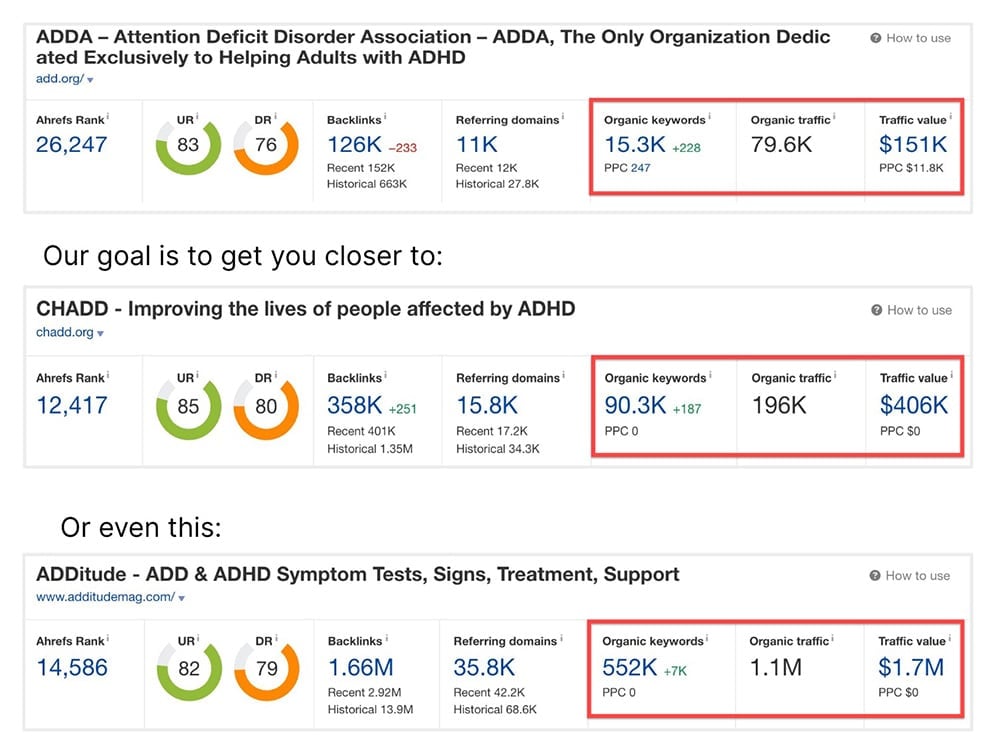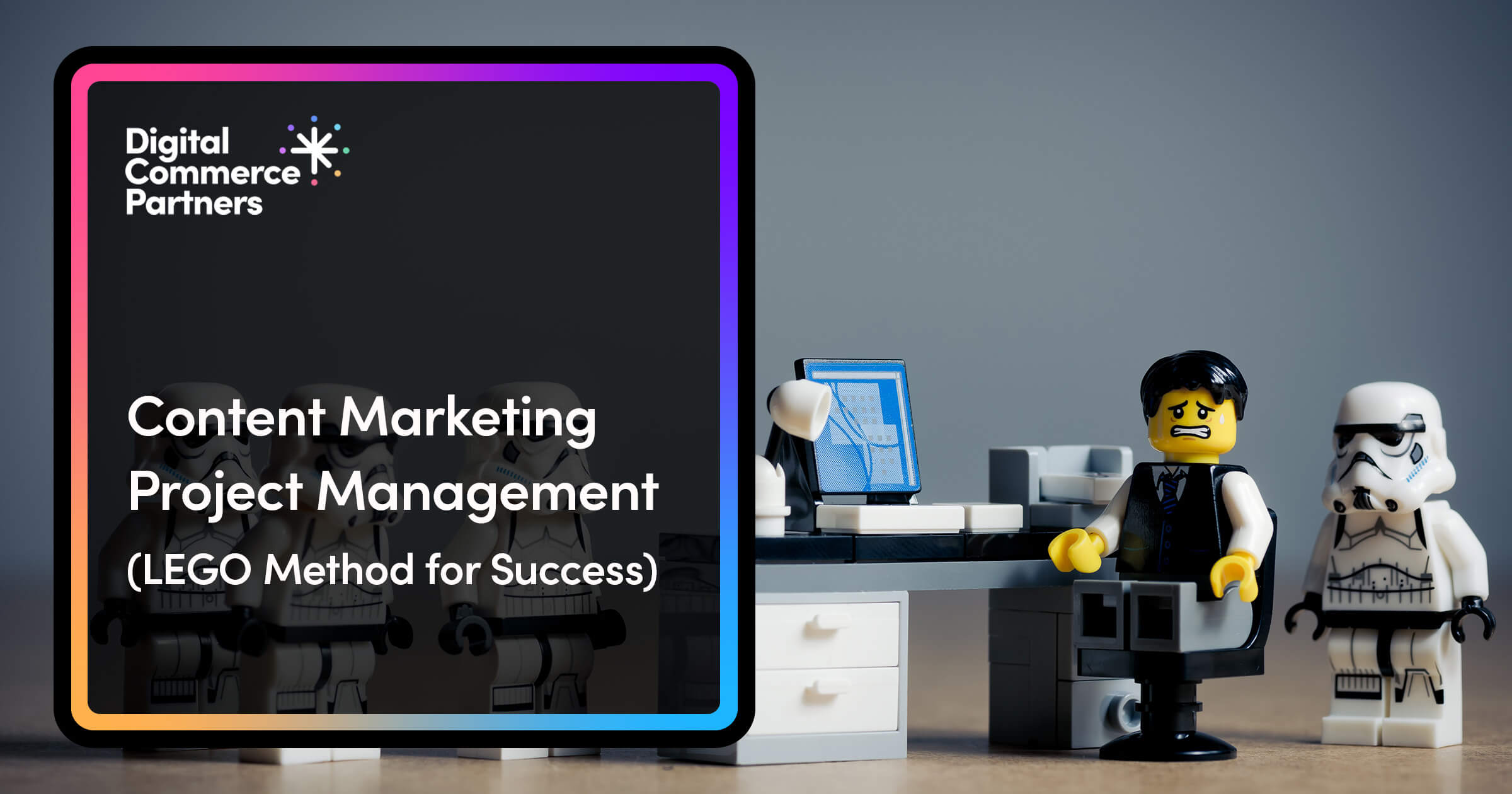Content marketing project management is the process of overseeing and guiding the strategic planning, creation, distribution, and measurement of content to attract, engage, and retain a targeted audience.
What I’ve learned managing content production for multiple clients over the last several years is that it’s a lot like building intricate LEGO sets. Each piece of content forms one component of a larger picture – and each component is formed of many individual elements.
This process blends creativity and strategy, forging connections and establishing trust across various channels. And this is the basis of an excellent content marketing strategy.
The 9 Core Components of Project Management for Marketing
Creating a content marketing project with a vague plan is like building a complex LEGO set with half a set of directions. (I have the lifesize LEGO Yoda with uneven, bulging eyes that will forever haunt me to prove it.)
Successful content marketing planning merges creativity, strategic thinking, and meticulous organization to ensure every piece of content not only reaches but deeply resonates with your audience.
Get more leads with less effort.
If you want a steady flow of targeted leads, we’ve got a proven process for driving organic traffic and converting it into qualified leads.
1. Understand Your Audience
Deepening your understanding of the audience involves more than just identifying demographic details. It requires engaging with your audience through social media interactions, surveys, and feedback mechanisms to gain insights into their preferences, problems, and behaviors.
Leveraging analytics tools to track user behavior on your website and social platforms can also provide valuable data to help you develop your brand voice.
Creating personas for different audiences can help in tailoring content that resonates with them on a personal level. This foundational step ensures that the content you create is not just seen but felt, driving deeper engagement.
2. Set Clear Objectives
Define what success looks like. Whether it’s increasing brand awareness, generating leads, or driving sales, having specific, measurable objectives gives your content direction and purpose.
You might have an immediate goal of building a giant LEGO Yoda. But zoom out and picture how the little green alien forms a key element in a bigger mission – to defeat the dark side.

If your goal is to manage the best content marketing projects, figure out what the underlying objective is.
- Do you need to hit a certain number of email signups?
- Publish X number of posts?
- Double organic traffic?

3. Map Out Your Content Strategy
This is your blueprint. A robust content strategy outlines what type of content you’ll produce, the channels you’ll use to distribute it, and how it aligns with your overall marketing goals.
Your content strategy should serve as a bridge between your audience’s needs and your business goals. This involves identifying how each piece of content can contribute to objectives like lead generation, brand awareness, or customer education.
You can see the results of our content strategy for one of our clients below:

SEO is a critical part of your content marketing project. You need to ensure your content reaches its intended audience. Perform keyword research to get a better understanding of what your audience is searching for (and why) and use these insights to inform your content creation.
SEO considerations should also extend to on-page optimizations like content structure, meta tags, and ensuring website accessibility, making your content more discoverable and engaging.
As you can see, SEO is something we excel at.
4. Conduct Competitive Analysis
Understand what your competitors are doing well and where there are gaps by analyzing their content. Tools like BuzzSumo, Ahrefs, or Semrush can offer insights into their most popular content, keywords they rank for, and their backlink strategy.
Use this information to identify opportunities to differentiate your content and capture audience interest.
5. Set Up Your Content Calendar
Timing is everything. A content calendar helps organize the production and publication of your content, ensuring a consistent and strategic approach to engagement. At this point, it’s essential to have your favorite content management system in place, so you can start scheduling.
When I undertake a large LEGO build, I first check the directions.

Then, separate out all the bags by number, then sort the bricks inside by matching color and size. This significantly helps streamline the build process by identifying any missing bags or parts. (I used to just toss all the parts on the floor and go from there – and while it was more challenging, it did take fives times as long, and pieces had a tendency to go missing.)
The same concept applies in setting up your content calendar. You can organize your topics by priority, then sort them by length and time to write and ensure there are no content gaps in your schedule.
6. Manage Team Collaboration and Workflows
Effective project management in content marketing requires seamless collaboration and a clear workflow among team members.
If I were a LEGO lover, which you can tell I’m totally not—I would say something like launching a content marketing project is like starting an epic build. Each member of the team has their own pieces they need to put in place that the others can build on. All of us are guided by a blueprint to ensure success.
Preferably you want a creative, agile team that works well together—and can hit their targets.
Regular meetings and check-ins can help ensure alignment on goals and timelines. And it’s vital to encourage open communication and provide a platform for your team members to share ideas and feedback.
Establishing a collaborative environment improves productivity and fosters creativity and innovation within the team. This is especially important to us since we have distributed team members, and our remote team communication strategies need to be top-notch.
We use Slack for communication (and Wordle scores) and Asana to manage our workflow.

7. Consider Content Updates and Curation
Not all content needs to reinvent the wheel. Balancing original content with curated content can enhance your brand’s value proposition and keep your audience engaged.
For example, an internal linking campaign or checking for older posts that need refreshing is a great way to boost your content.
8. Measure and Analyze
If you can’t measure it, you can’t improve it. Regularly analyzing your content’s performance against your objectives allows for continual optimization and refinement.
- KPIs: Key Performance Indicators (KPIs) are essential for monitoring the success of your content marketing efforts. These might include website traffic, engagement metrics (like time on page, bounce rate), conversion rates, social media shares, and SEO rankings.
Analyzing these KPIs will help you understand what types of content and topics resonate most with your target audience.
You can identify trends, adapt your strategy to more of what works, and less of what doesn’t, and make informed decisions about future content. This continuous loop of creation, measurement, and refinement is crucial for optimizing your content marketing projects and achieving sustained success.
9. Stay Flexible and Agile
The digital landscape is ever-changing. Being able to pivot your content strategy in response to new trends, audience insights, or business priorities is essential for engagement and continued growth.
What helps the most is using an agile approach to project management. At the end of each Sprint, we do a Retrospective to get input from everyone about what went well and what can be improved. Our goal is to continually improve the quality of the work we do.

By weaving these components into your content marketing planning, you lay the groundwork for a strategy that not only achieves your business goals but also builds lasting relationships with your audience.
The Art of Content Project Management: Build Success, One Lego at a Time
Managing a content marketing project is like assembling a masterpiece from a box of LEGOs. It requires vision, planning, execution, and the agility to adapt when the picture on the box changes. It’s about knowing your tools, understanding your audience, and never losing sight of your objectives.
And remember, even if you find yourself holding a piece that doesn’t seem to fit anywhere, with a little creativity and perseverance, you’ll find its place in the bigger picture.
Ready to build something amazing? Let’s get started.

